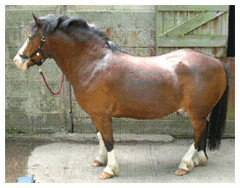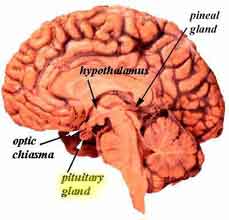Happy Monday everyone!
Osteoarthritis is a common problem that many horse owners deal with on a daily basis. We've written a brief educational article to highlight different aspects of this disease, as well as management and treatment modalities. If you have any questions regarding this article feel free to add a comment or send us an email!
Osteoarthritis in Horses
Overview:
Osteoarthritis
(OA), which is sometimes referred to as degenerative joint disease (DJD), is a
progressive degenerative process that can lead to pain, swelling, and
immobility of affected joints. Some studies have shown that OA can be the cause
of up to 60% of lamenesses. Osteoarthritis is something that almost every horse
owner, especially those with performance horses, will encounter at some
point. Whether it occurs in the 22
year-old trail horse or the 3 year-old reining horse, there is no clear and
accurate picture of the typical horse affected with OA. This isn’t just an old
horse disease, as we often think of arthritis in people, but has been shown to
be the source of lameness in horses as young as 2 years of age.
OA
is a disease process that affects joints; most often joints of the limbs but it
can also be seen in the neck, back, and even the jaw. Many factors are involved
but the end result is the weakening and destruction of the thin cartilage that
lines the ends of bones where they come together to form a joint. Trauma is
often the initiating factor, especially in young performance horses, and can be
divided into two categories: 1) Abnormal forces on normal cartilage and 2)
Normal forces on abnormal cartilage. Abnormal forces include repeated cycles of
athletic trauma [even the activity of training or performing] and joint
instability due to soft tissue injury or fractures. These forces induce a
response that leads to pain and swelling of the joint as well as release of
enzymes that damage the normal cartilage. There can also be abnormal cartilage
in the joint caused by repeated abnormal forces, developmental bone disease
[such as OCD] or the normal aging process. This abnormal cartilage is weaker
and more fragile; therefore even the simple forces of walking around the
pasture can damage it. Once the cartilage has been damaged the progression of
OA has started. There is no cure available for osteoarthritis and once the
cartilage has been destroyed there is no way for it to grow back, however there
are many options available for management of OA. These options focus on slowing
the advancement of cartilage destruction and controlling pain and inflammation;
thereby making the horse comfortable enough to perform and have good quality of
life.
Clinical
Signs:
Lameness,
which is when the horse fails to move in a regular and sound manner, is the
most identified clinical sign associated with OA. The degree of lameness can
range from very mild to severe crippling pain. What a horse owner may notice
can vary as well; sometimes it’s a performance issue or maybe the horse just
doesn’t feel right when being ridden, while other times there is a visible limp
when walking across the pasture. It is important to know that the sooner a veterinarian
can diagnose the source of the lameness the better. This way appropriate
therapies can be started to help slow the progression of OA. Another
abnormality that can be identified is effusion or swelling of the affected
joint. All joints are surrounded by a thick capsule, kind of like a big
balloon, and when a joint is inflamed the capsule will swell up with joint
fluid. A veterinarian can identify these swollen joints when they examine and
palpate the affected joint. Occasionally heat can also be felt as a result of
inflammation within the joint. Another
clinical finding that is associated with advanced chronic OA is new bone
growth, commonly called bone spurs, around the area of the joint. Bone spurs
can also be referred to as osteophytes or enthesophytes depending on where they
are located. Bone spurs are a
result of abnormal forces sustained by the joint. The amount of new bone growth
is not always associated with the degree of discomfort. Some horses with bone
spurs that can only be seen with radiographs can be much more painful than
horses with larger spurs that can be felt on palpation.
Diagnosis:
The
process of diagnosing OA can often involve many steps aimed at not only
identifying where the disease is present but also eliminating other potential
causes of lameness. A lameness exam with nerve and/or joint blocks is most
often used to identify the limbs and joints affected. Imaging is the next step
in the process and can range from radiographs and ultrasound all the way to
advanced imaging like CT, MRI, and nuclear scans. Arthroscopic surgery, which
involves putting a small camera into the joint, can also be used to identify
and treat diseased cartilage. This procedure typically requires general
anesthesia and is commonly used when abnormalities cannot be identified by
other means.
Available
Therapies:
NSAIDs-
NSAIDs
(Non-steroidal Anti-Inflammatory Drugs) are the oldest and likely the most
well-known and accessible therapy available today. While phenybutazone (Bute)
is often used there are newer products on the market that have a more targeted
action and fewer side effects. Equioxx® is an oral paste marketed
for the treatment of pain due to OA and has fewer adverse effects than Bute. Surpass®
is a topical product that is absorbed through the skin and can be applied to
the outside of the affected joint.
Intra-articular
Medications-
A wide
range of medications are available today that can be injected into the diseased
joint. Corticosteroids are commonly injected to help decrease inflammation and
pain within the joint but caution should be used as some steroids can lead to
more cartilage damage down the road. Another commonly used medication is hyaluronic
acid, which is a component of healthy joint fluid and provides lubrication to
the joint. Lastly there are products called polysulfated glycosaminoglycans
(PSGAGs) that can be injected into joints to help protect what cartilage is
left. Examples of these products
include Adequan® and Legend®.
Intramuscular
PSGAGs-
PSGAGs
can also be injected into muscles, thereby treating the whole body. This can be
helpful when more than one joint is affected and can allow some owners to do
treatments at home.
Regenerative
Medicine-
This
group of therapies represents the most recent advances in OA therapies, the
most popular of which is a product called IRAP (Interleukin1-receptor
antagonist protein). The product is autologous, meaning a horse’s own blood is
used to make it thereby reducing the risk of reactions. Once processed, the
resulting liquid, which has a high concentration of a specific protein that can
block one of the major causes of joint inflammation and cartilage damage
(Interleukin-1), can be injected into affected joints or frozen for later use. This
product has proven in several studies to be effective in the early stages of OA
as well as in some moderately affected cases.
Prevention:
Staring
preventative measures early, especially in horses more likely to develop OA,
can help delay the onset on clinical signs and slow the progression of the
disease. Many different oral supplements are available that contain things like
glucosamine and chondroitin sulfate, which can protect cartilage and keep
joints healthy. Not all supplements are created equal and you should work with
your veterinarian to select a product that is proven and safe. Intra-muscular PSGAGs
can also be used as a preventative method to help protect cartilage before it
becomes damaged.
Management
changes can also help to keep horses prone to OA comfortable. Low impact
exercise like swimming or water treadmills can help keep joints healthy and
mobile while reducing the amount of trauma to the cartilage. It is also
important to make sure that the horse is physically fit enough for the job that
they do. They should also be given appropriate warm-up and cool-down time when
undergoing work. Weight management is crucial because a heavier horse can cause
more damage to their joints over time and cause existing OA to progress more
rapidly, all of which can lead to a more painful horse.
The
Long Haul:
So
with all this information in front of you the big question you have to ask is
what should you expect once your horse has been diagnosed? Therein lies the
million-dollar question for veterinarians and horse owners today. Although our
profession has made great strides in the research of why OA occurs and advanced
therapy methods, there is still a great deal we don’t know about this disease. What
we do know is that this disease is manageable, especially in mild and moderate
cases. Even some severe cases can be kept comfortable enough to be used for
light riding, breeding, or as nice pasture companion. What needs to be kept in
mind is that there is no known cure for this disease and it will continue to
progress over the horse’s lifetime.
Starting preventative measures early, diagnosing the issue as soon as
possible, and getting appropriate therapies when needed can all help to slow
the progress of OA and keep your horse doing what they love for years to come.
























































